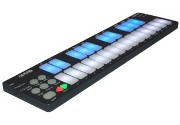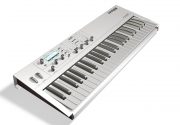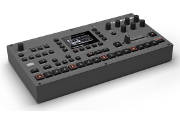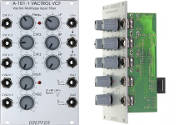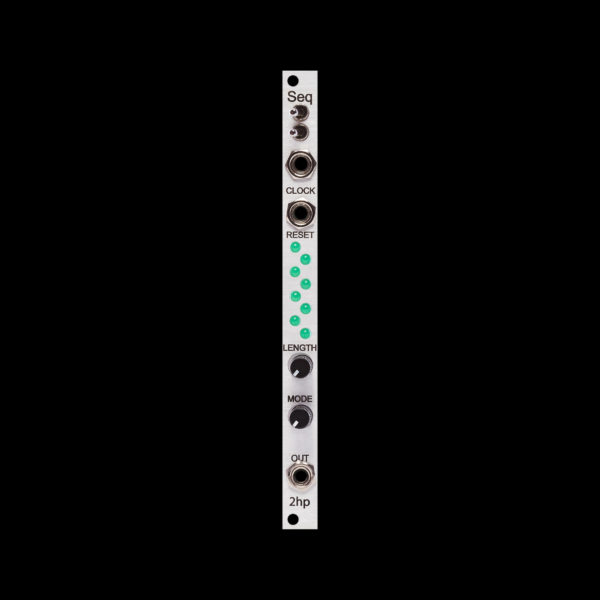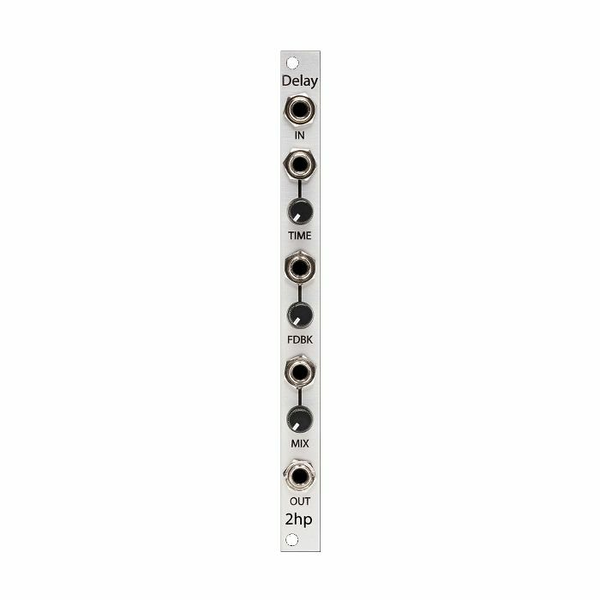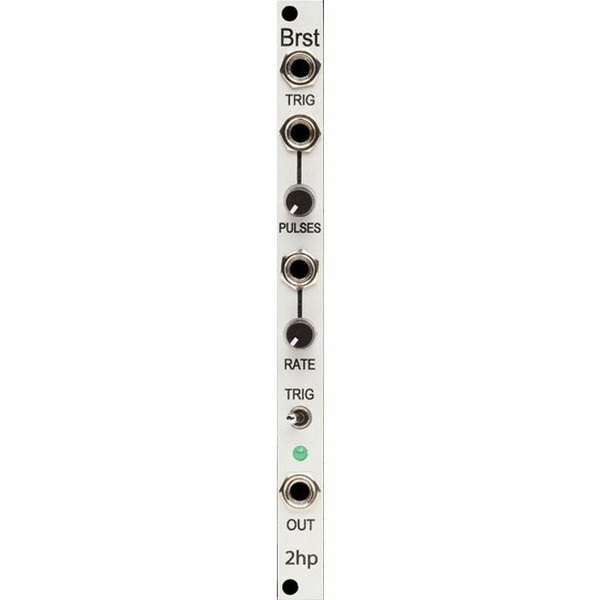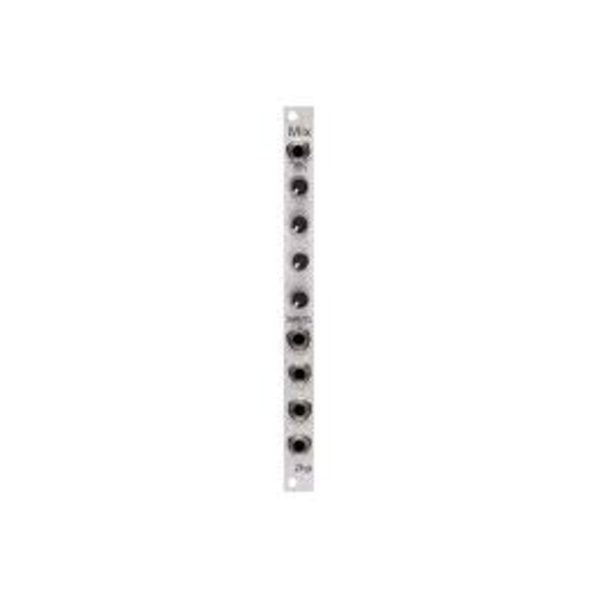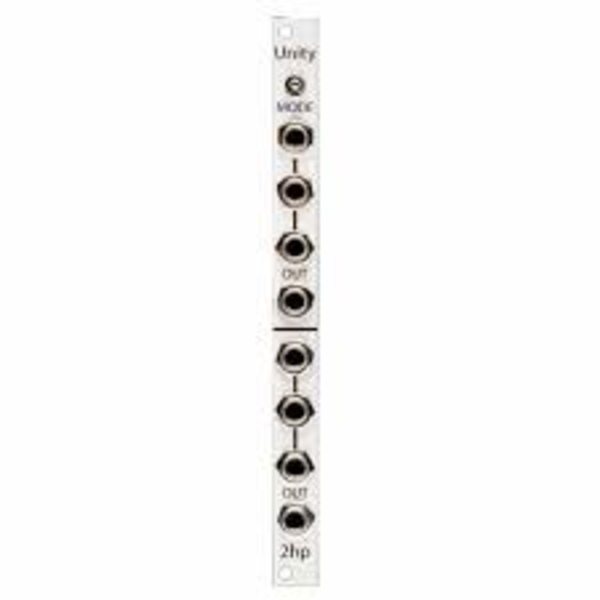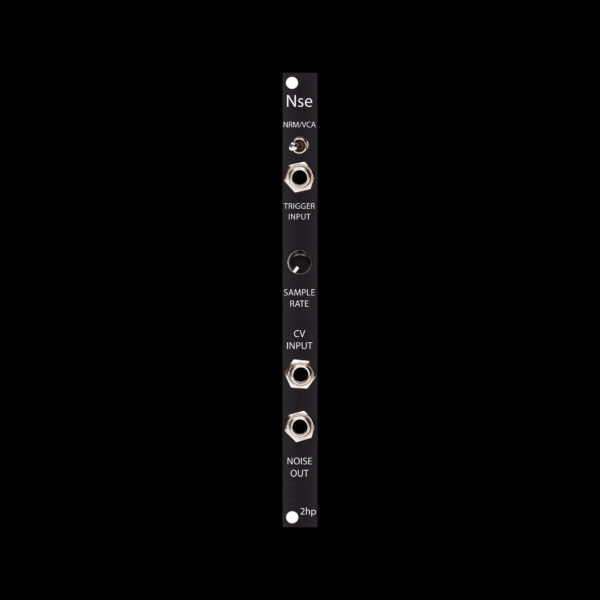Spectral Processor Model 296t
The TipTop Audio Buchla 296t recreates the legendary Buchla 296 spectral processor, a bandpass filter with 16 frequency bands, VCAs and envelope followers each.
749,00 € TTC
The TipTop Audio Buchla 296t recreates the legendary Buchla 296 spectral processor, a bandpass filter with 16 frequency bands, VCAs and envelope followers each.
Time travel to San Francisco in the 1960s: avant-garde musician Morton Subotnick asks modular pioneer Don Buchla to develop an instrument for him to compose and perform electronic music. First the Buchla Box was created, then the first commercially available system (Buchla 100), before the world-famous Buchla 200 saw the light of day in the 1970s, which counted not only Morton Subotnick but also the “Modular-First-Lady” Suzanne Ciani among its users. As part of this system, the Buchla 296 Spectral Processor represented an extremely creative tool, which was re-released in 2010 as the Buchla 296e adapted to digital standards with a touch display, representing one of the most expensive and exclusive modular building blocks ever.
Just like the likewise glorious Moog 914 Fixed Filterbank from the first Moog modular systems, Buchla’s approach consists of 14 fixed-frequency bandpass filters, each accompanied by a lowpass and a highpass filter (>100Hz and <10KHz, respectively). However, these are not intended for “pure” equalizing of your tracks, but powerful tools for sound design. So in each of the 16 bands of the 296t high quality components are used to ensure the quality required for these steep filters.
Each of the even and odd frequency bands has separate and grouped inputs. A pre-emphasis control can be used to counteract thinning of the high frequencies. On the output side, three different options can be selected. The Combfilter output sums the even and the odd outputs by means of two outputs. The Attenuator Outputs sum the signal corresponding to the level faders on the front panel and the grouped Even and Odd Outputs. Via Program Output the bands can also be grouped (even/odd/all), but are additionally routed via a VCA that allows setting the volume per band, which in turn can be controlled via 16 individual CV inputs. This, in contrast to Moog’s approach, extended CV connectivity allows an even more flexible emphasis of the individual bands via sequencers, LFOs or envelopes, which can refine signals with extremely lively sound progressions. In addition, an envelope follower generates a CV signal from each band that reflects the amplitude of the input signal.
This can be transferred to another signal via the Programmed Spectrum Transfer section. For example, the frequencies of a human voice signal can be transferred to those of a synthesizer sound. By means of internal crossmodulation of the even and odd bands, a vocoder sound a la Buchla 296 can be created. By means of two 296t modules with two times 16 bands in play, an even more detailed “robot sound” can be realized. The Program Control section allows a “scan” through the frequency spectrum of the bands by means of the Frequency control, while the Width control determines how many bands “open”.
The original module was used in many Hollywood movies in the seventies and is known for its extremely nice sounding decomposition of the frequency spectrum. Besides a good-sounding dedicated noise generator (e.g. Doepfer A-118), the TipTop Buchla 207t module (6-channel mixer with preamp) can also be an ideal partner to the 296t to ask human voices or line-level synthesizers into your sound design dreams.
Buchla and Tiptop Audio have joined forces to make the legendary 200 series available again and adapt it to the modern Eurorack standard. The devices, which have become very rare nowadays, are to be made accessible to a wider number of users. Each product will be produced separately.
Features:
- Programmable spectral processor/filter bank
- Inspired by the legendary Buchla 296 Spectral Processor
- Suitable for creative sound design, vocoding and much more.
- 16 fixed frequency bandpass filters split into odd and even frequencies (“Odd” and “Even” respectively)
- Audio inputs for Odd and Even or all frequency bands
- Combfilter output: Sums Odd and Even bands
- Attenuator outputs: Sums the signal corresponding to the level fader plus odd and even bands.
- Programmed output: Sums odd and even bands and allows CV control of
- individual bands and spectral transfer (e.g. for vocoder effects)
- Single outs, envelope follower (with decay time control) and CV input for each band
| TE: | 52 |
| Power consumption +12V: | 360 |
| Power consumption -12V: | 350 |

